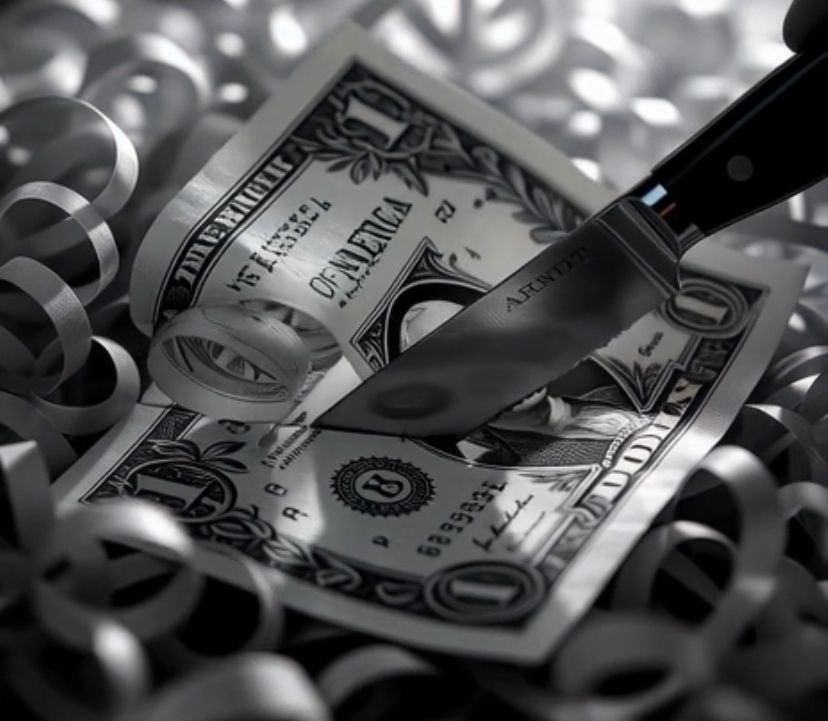Let’s unpack what this means! To understand this, we must first examine the economic misappropriation that has risen and fallen, and the money-printing phenomenon, including practices the Goliath money-printing machine in Washington may have built upon.
The International Monetary Fund describes money at its most fundamental level as “belief”. If people don’t believe a currency is valuable, they stop holding it, and it devalues. Conversely, when people trust a currency, policymakers can exploit that belief, printing more money, which devalues it slightly, cascading into inflation. Inflation is effectively a covert tax placed upon your earnings that reduces the buying power of your paycheque.

In simple terms, it’s Washington saying, “For every penny in circulation, we’ll shave off a tiny fraction of its value to print more money, so we can fund things.” This type of institution-versus-people monetary system often arises out of necessity post-war, as countries need funds to rebuild and service debt incurred during wartime. An additional tax on people post-war would spark riots, so the covert tax of shaving pennies is used, largely unnoticed, like a stealth bomber. So people see prosperity and believe the government has a magic money tree, when in fact it’s just the accumulation of shaved pennies.
Back in ancient Rome, silver denarii were shaved in circulation to create new silver denarii from the shavings. This isn’t dissimilar to what governments do today, though what was once a crime in circulation has become a legitimised tool for governments worldwide. Fast forward to the 13th century, and with silver’s value high, this practice became rampant again, with “long-cross” pennies designed to make shaving more obvious. By the 17th century, this was again a widespread issue that undermined the economy, as shaved money in circulation was less valuable than it appeared. This culminated in the Great Recoinage of 1696 under King William III, overseen by Sir Isaac Newton, in which old coins were recalled, replaced with reeded-edged coins to prevent shaving, and clippers were harshly prosecuted to end the practice. So the money-printing machine in Washington, D.C., and central banks worldwide is essentially modern-day penny shaving. Though centralised and legitimised for the country’s benefit, it still erodes your paycheque’s buying power bit by bit.
This isn’t entirely misguided, as post-war measures are often necessary, but we’ve seen consecutive governments worldwide rely on and sustain penny shaving instead of building truly sustainable economies that support people and their buying power. This reflects the reality that operating a country like a business is tough. Most politicians aren’t skilled businesspeople, so they rely on tools like money printing to meet people’s needs. This isn’t necessarily bad in moderation, as infrastructure benefits all citizens, but the reliance and expectation that governments now place on shaving people’s pennies is a misalignment of purpose. Governments have forgotten that the measure originally used for post-war rebuilding is a lever for times of strife, not a convenient magic wand to wave when governing becomes difficult.
The modern-day Great Recoinage, you could say, is crypto, particularly Bitcoin, as it once again prohibits “penny shaving”. Enter Bitcoin: it’s decentralised with a fixed supply of 21 million coins, like gold, so it cannot be misappropriated. If you trust Bitcoin and support its value, governments cannot shave it. Centralised governments of past administrations have feared this, having built a reliance on shaving people’s pennies and structures in Washington, D.C., to convince people it’s necessary and laudable, that they live better lives and are better humans for having their pennies shaved, their paycheques’ value eroded through this covert tax of penny shaving that fuels inflation.
Remember, your pound is getting thinner, and if you put it under the mattress today, its value could shrink to 67 cents in 20 years. On the flip side, if you store a Bitcoin today, it will still be one Bitcoin. Though its value will fluctuate over time, as long as people invest belief and energy in Bitcoin, its value could grow!
